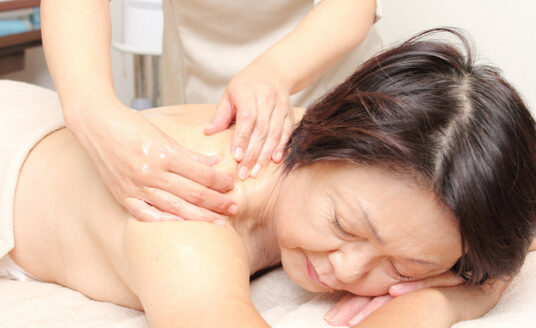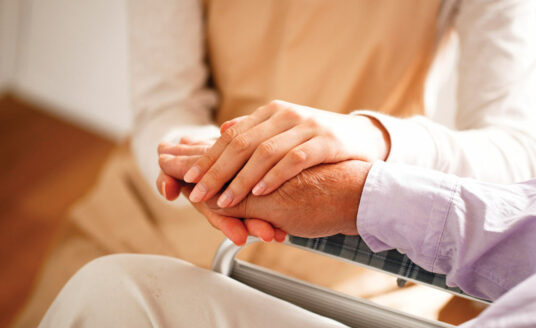Younger adults navigate a home differently than do seniors. After all, a flight of stairs isn’t a threat to their legs and sense of balance. To a senior who has aching knees, balance issues, and less overall strength, stairs and other items within the home can become dangerous obstacles.
Each home has unique challenges, and the number of those challenges increases for seniors as they age and experience:
- mobility issues
- loss of strength, flexibility, and balance
- vision problems
- hearing loss
- cognitive decline.
Couple this with the possible confusion and dizziness caused by medications, debilitating chronic illnesses, or the after-effects of a recent surgery, and a much different picture of the home and the potential for accidents arises.
Let’s take a room-by-room look at the home from a senior’s perspective.
Kitchen
Forgetting to turn off an electric appliance, stovetop or oven is a fire hazard. Even the height of the oven door needs to be considered, as bending toward a hot oven can be dangerous. A replacement or second oven conveniently placed at a higher level would be an option.
Some stoves automatically shut off if motion is not detected in the kitchen for a prolonged period of time. A stove with a larger visual display for temperature and timer is a plus for seniors with vision problems, and kitchen timers with louder alarms for the hearing-impaired are available. A few other devices can make the kitchen much safer:
- Long oven mitts that also protect arms
- Pots with two handles to make them easier to move
- Decluttered countertops
- Cabinet space and shelves within easy reach
- A “Lazy Susan” to organize items on a countertop
- Locked cabinets for dangerous cleaning supplies if dementia has become an issue
Encourage your senior to clean up spills immediately, and to never walk on a wet floor. Make sure they have a fire extinguisher and are able to use it in an emergency.
Family caregivers should periodically check the refrigerator to see if food is beyond its expiration or “best by” date. Items can be labeled with large tags stating when the food should no longer be consumed. Also, make sure the senior is adequately stocked with nutritious foods. The refrigerator or freezer is also a good place to post emergency contact information.
As with all areas of the house, working smoke detectors need to be located throughout the home and checked regularly. Carbon monoxide detectors are also a good idea.
Bathroom
It’s small, cramped, and sometimes steamy with wet surfaces on floors and walls. The bathroom may be the most dangerous room in the house.
Family caregivers should check for loose towel racks, indicating their senior may be grabbing them for stability. Towel racks are for towels and not to support a falling senior adult. Consider installing grab bars (slip-resistant—not ones with high-gloss finishes).
Walk-in showers are an option if climbing into the tub is difficult for the senior. Shower chairs can also provide assistance. Lever faucets are easier to turn than knobs. The hot water heater should be set to no more than 120 degrees to prevent scalding, and faucets should be clearly labeled hot or cold. If this becomes a problem, paint parts of the hot faucet red and the cold faucet blue to make the difference more apparent.
Toilet seats that are too low can be difficult for a senior. There are devices for raising toilet seats.
Non-slip mats on floors and in tubs are necessities. All toiletries and other bathroom supplies should be within easy reach, and make sure the bathroom door swings outward to allow outside access.
Living Room
Eliminate clutter in the living room and arrange that furniture so that clear paths are easy to see. Also, check for furniture that may be wobbly, have loose armrests or otherwise pose a danger. If a chair is too low for the senior to comfortably sit, add a cushion.
Proper lighting is important throughout the home but be cognizant of lamp cords as tripping hazards.
Other items may include:
- Removal of loose throw rugs
- Repair or replacement of torn carpet.
- Repair of uneven floors (may require a contractor)
Hallways
A hallway, because it passes between multiple rooms, is an excellent location for smoke and carbon monoxide detectors. Lighting should be adequate and night lights for late-night passage to other rooms should be maintained. This will also assist seniors with dementia in finding their way through the home after dark. Also, eliminate clutter from hallways.
Basement and Laundry Room
Stairs can be a major fall hazard, and falls are the number one cause of senior adult injuries. Sturdy handrails and sufficient lighting with an on-off switch at the top of the stairs are a must. The stair treads should be non-slip and consider painting the bottom step a contrasting color to indicate when the bottom of the stairs is reached.
Nothing should ever be set on a stairway.
Carrying laundry baskets up and down stairs may become one of the earliest and most significant hazards for a senior. Consider a home health aide, family member or friend who can provide laundry services. Or, if possible, move the laundry facilities to the first floor of the home.
Resources
There are many other areas of concern associated with living in a home for seniors—garage and yard maintenance, snow removal, the clearing of storm damage, maintaining proper room temperatures, etc. And proper medication management is vitally important. Please consult our blog for previous articles on safety.
If the many items we have mentioned seem overwhelming, one source to consult would be a geriatric care manager, who is professionally trained and experienced in dealing with senior issues, including home safety. In consultation with the senior and family, a care manager can review current safety needs, and advise when additional safety precautions should be taken, including the presence of private duty aides if the challenges become too great for the senior and his or her family.
Also, there are contractors who specialize in home renovations for senior adults. Referrals from trusted sources are a good place to begin looking for a reliable contractor. The National Association of Homebuilders offers a state-by-state directory of builders who are Certified Aging in Place Specialists. For a younger family member, looking at a home through the eyes of a senior will require some rethinking, but the safety and security it provides for a senior loved one is worth the effort.
For additional safety tips, check out the Senior Home Safety section of our blog.
| Bethesda has a 133-year tradition of providing excellent senior living options, including independent living, assisted living, memory care, and skilled nursing. If you are considering assisted living, we welcome you to tour our two communities: Bethesda Hawthorne Place and Assisted Living at Charless Village. Discover the level of care that only a non-profit staffed by highly-trained nurses, therapists, and aids can offer. |



